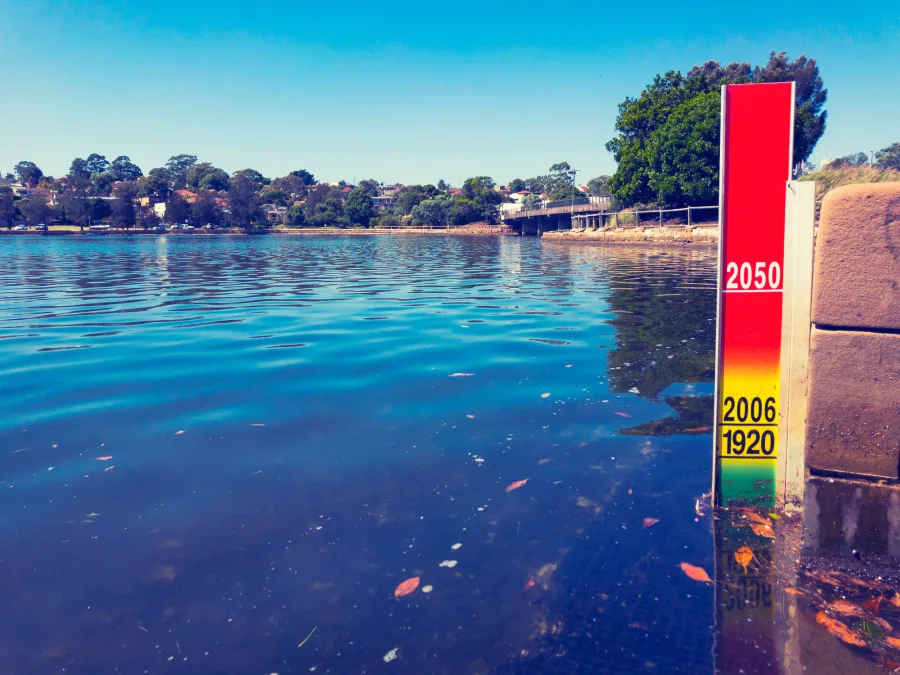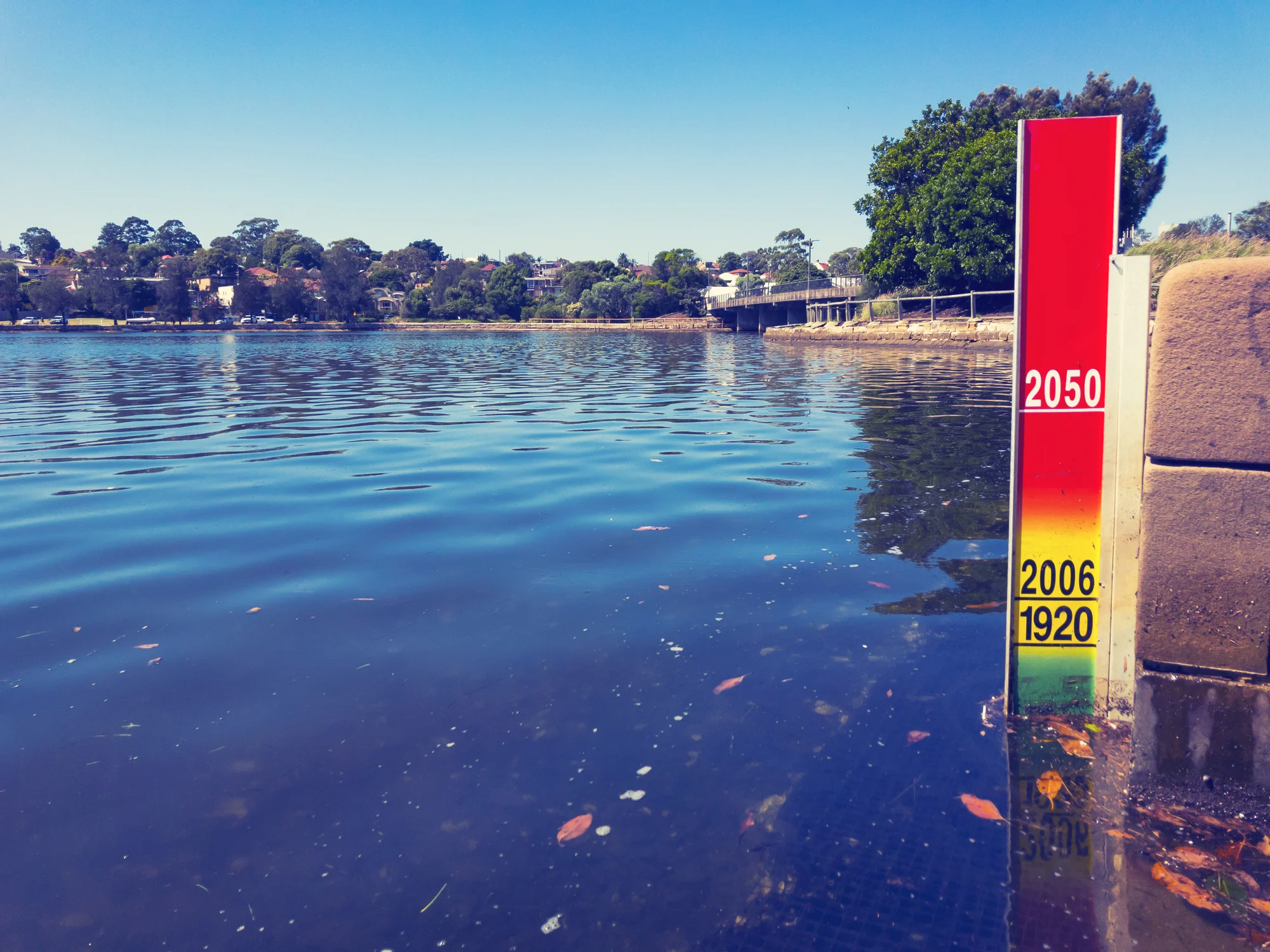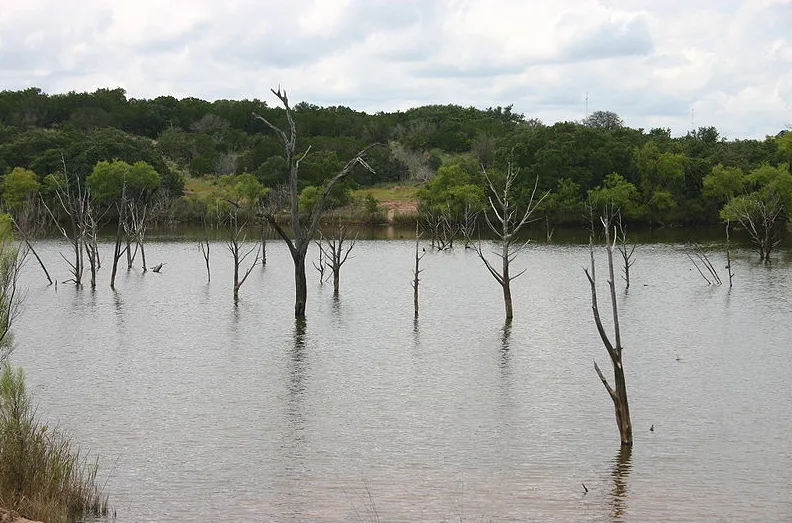
Sea levels will rise into the 2300s even if emissions targets are met
Ghost forests, eroding coastlines, and damaging floods are visible impacts from the rising oceans.
What if every country reduced their carbon emissions and then all greenhouse gas emissions on Earth were eliminated after 2030? A recent study modelled this exact scenario and found that oceans would continue to rise well beyond 2300, small islands and thousands of low-lying coastal communities would flood, and just five of the world’s top polluters would be mainly responsible.
The researchers in this study, which was published in Proceedings of the National Academy of Sciences of the United States of America, investigated the lag time between greenhouse gas emissions and sea level rise and analyzed whether the commitments that the signatories to the Paris Agreement have made would minimize the impacts from rising oceans.
Signatories to the Paris Agreement each have Nationally Determined Contributions (NDCs), which are efforts that a country has committed to making that will reduce national emissions and increase climate change adaptation efforts. The NDCs outline and communicate and the collective goal of the Paris Agreement, which is to limit global warming to below 2°C above pre-industrial levels, and are provided until the year 2030.
To project how much the oceans will rise, the researchers simulated contributions from thermal expansion (the expanding motion of water as it warms and occupies more volume), melting global glaciers, land-water storage, and melt from the Greenland and Antarctic ice sheets until 2300. The researchers modelled the concentration of carbon dioxide on Earth with the assumption that all countries fulfill their NDCs by 2030 and then zero greenhouse gas emissions are released after that year.

Credit: Getty Images
Their final projections show that global mean sea level rise will increase by 43 cm in 2100 and will continue to rise by 105 cm in 2300, based on a reference period from 1986 to 2005, which would significantly impact over 600 million people that live on small islands and in low-lying coastal areas (< 10-metre elevation).
WHERE ARE THE EMISSIONS COMING FROM?
According to the model, emissions from the Paris Agreement signatories between 2016 to 2030 contributed to approximately 20 cm of the total sea level rise. The researchers note that 26 cm of the total sea level rise by 2300 is due to emissions from the world's top five polluters -- the United States, China, India, Russia, and the European Union.
The models projecting sea level rise in 2300 were able to isolate the contributions of individual countries between 1991 and 2030 and found that China would be responsible for 10 cm of the sea level rise, 6.8 cm from the U.S., 4.7 cm from the EU28, 2.4 cm from India, and 2.4 cm from Russia.
After China, the U.S. is the second biggest polluting nation and gave the United Nations a formal notice of intention to withdraw from the Paris Agreement in November 2019. The formal withdrawal process can take years and the U.S. may be obligated to maintain their commitments, as they are required to continue reporting their greenhouse gas emissions during this period of time.
Since 1990, the global mean sea level has risen by approximately 20 cm at a speed of 3 mm per year. The main contributors to rising oceans include melting glaciers, melt from the Greenland and Antarctica ice sheets and thermal expansion. These factors contribute to sea levels rising at different speeds. The study says that future global mean sea level rise from greenhouse gases emitted by humans is only in the initial stages.
SEE ALSO: A look at the UN's COP 25 climate change conference
HOW WILL CANADA BE IMPACTED?
Sea level rise on both the east and west coasts of Canada is threatening to permanently change the national landscape and flood communities that are home to millions. Newfoundland, the Beaufort Sea coast of the Northwest Territories and Yukon are seeing sea level rise faster than the global average, and Halifax experienced sea level rise at a rate of about 3.3 mm per year during the 20th century, according to Canada’s Changing Climate Report (CCCR). For comparison, sea level rise globally was approximately 1.2 mm per year between 1900 and 1990.
The CCCR states that sea level rise along some Canadian coastlines, such as Atlantic Canada, will be higher than the global average and will be responsible for flooding and erosion. Ghost forests, which are areas of dead trees that were killed by the salty ocean water, are a striking indicator of rising sea levels along the Atlantic coast of North America.

When the Colorado River, Texas is dammed to form Inks Lake, a forest was immersed in water and thus killed, resulting in a ghost forest. Credit: Wikimedia Commons
This phenomenon has been observed in Atlantic Canada and through the St. Lawrence estuary and is threatening major agricultural loses near coastal regions due to saltwater intrusion. These ghosts forests can form before oceans permanently flood the land -- just a few pulses of high salinity water during storms is enough to trigger vegetation mortality and the salinity effects can linger in the groundwater for decades.
On Canada’s west coast, sea surface temperatures at Amphitrite Point and Kains Island on Vancouver Island are rising 0.08°C per decade and have the potential to leave visible impacts on the Lower Mainland landscape. Sandy beaches risk erosion and infrastructure in low-lying areas, such as Richmond and Delta, are at risk of destructive flooding.
Rising sea levels in the Arctic will increase the rate of erosion on coastlines and threaten communities that are built near the shorelines. Northern Canada is seeing the most rapid rate of warming across the world and annual average temperatures have increased by 2.3°C in this region since 1948. This unusually rapid warming in the North is referred to as Arctic amplification, which means that temperatures in the Arctic have warmed twice as fast as regions in the mid-latitudes, which is in part caused by sea ice melt and global atmospheric mechanisms that transport heat from the equator to the Arctic.
THE TAKEAWAY
The researchers chose the year 2300 as a date to demonstrate that greenhouse gas emissions will shape coastlines around the world for centuries to come. They state that estimating sea level rise relies on a set of assumptions and caveats, and that their scenarios are simplified to isolate the sensitivity of rising sea to emissions released under the Paris Agreement and to provide a lower bound for future sea level rise.
It will take many decades for the planet to reach zero greenhouse gas emissions and sea levels will continue to rise well beyond 2300. Despite the adoption of the Paris Agreement, global greenhouse gas emissions have not shown any sign of peaking. Coastal adaptation will be inevitable and this study emphasizes the importance of significant near-term mitigation efforts and the need for widespread reductions of greenhouse gas emissions.







